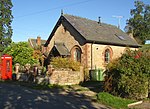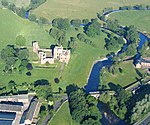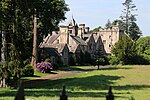Acorn Bank Garden & Watermill
Cumbria geography stubsEngvarB from August 2019Gardens in CumbriaGrade II listed buildings in CumbriaNational Trust properties in Cumbria ... and 3 more
Tourist attractions in CumbriaUnited Kingdom garden stubsWatermills in Cumbria
Acorn Bank Garden & Watermill is a National Trust property situated just north of Temple Sowerby, near Penrith, Cumbria, England.The garden features over 250 medicinal and culinary herbs and is protected by ancient oaks and high walls. There are orchards with old varieties of English fruit and a partially restored watermill. It was left to the trust in 1950 by Dorothy Una Ratcliffe, a popular author in the Yorkshire dialect, who bought and restored the house and garden. The house was known for some time as Temple Sowerby Manor before the National Trust reverted to its original name of Acorn Bank in 1969.
Excerpt from the Wikipedia article Acorn Bank Garden & Watermill (License: CC BY-SA 3.0, Authors).Acorn Bank Garden & Watermill
Milburn Road,
Geographical coordinates (GPS) Address Nearby Places Show on map
Geographical coordinates (GPS)
| Latitude | Longitude |
|---|---|
| N 54.647 ° | E -2.5934 ° |
Address
Milburn Road
CA10 1SW , Temple Sowerby
England, United Kingdom
Open on Google Maps








